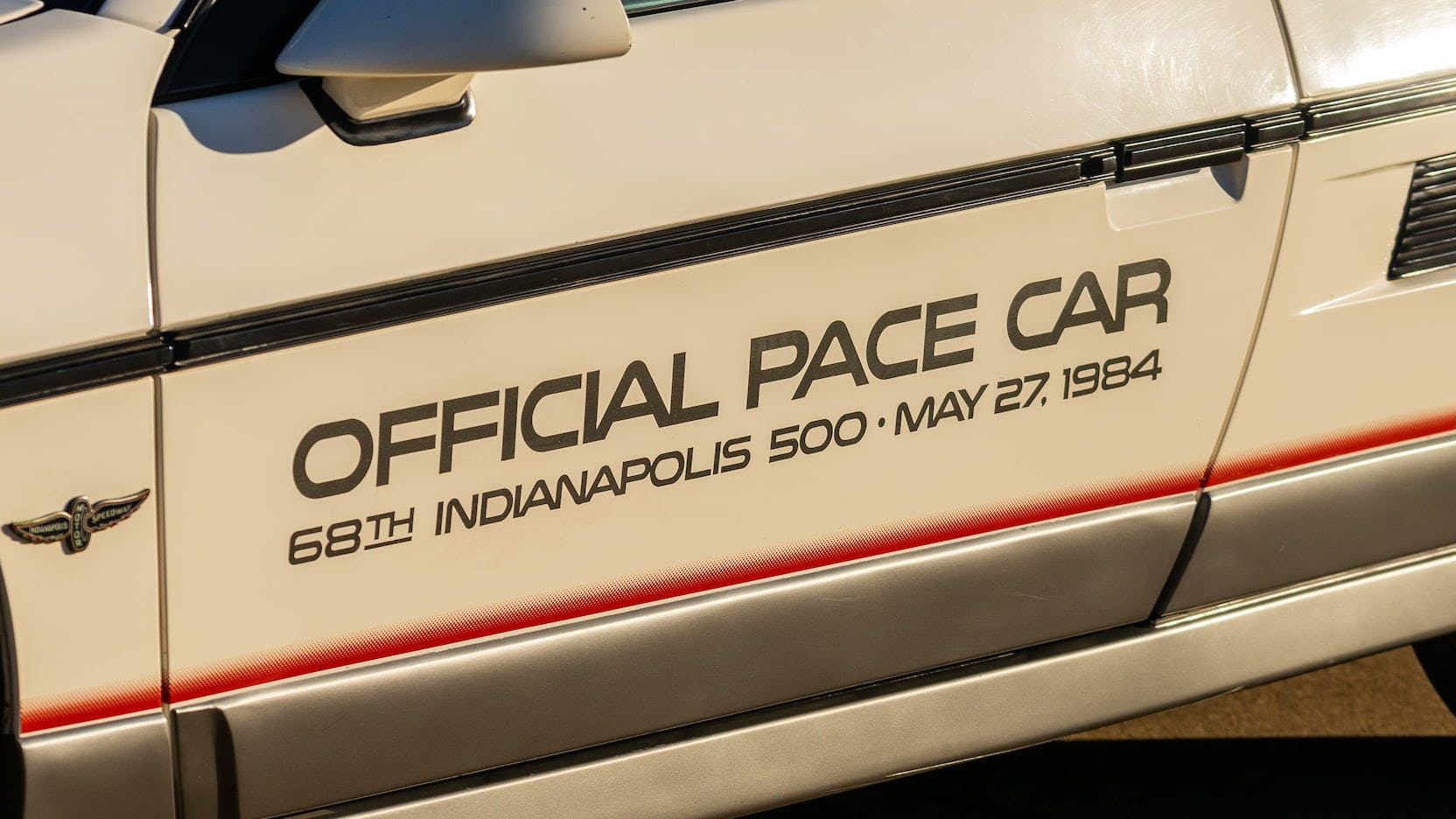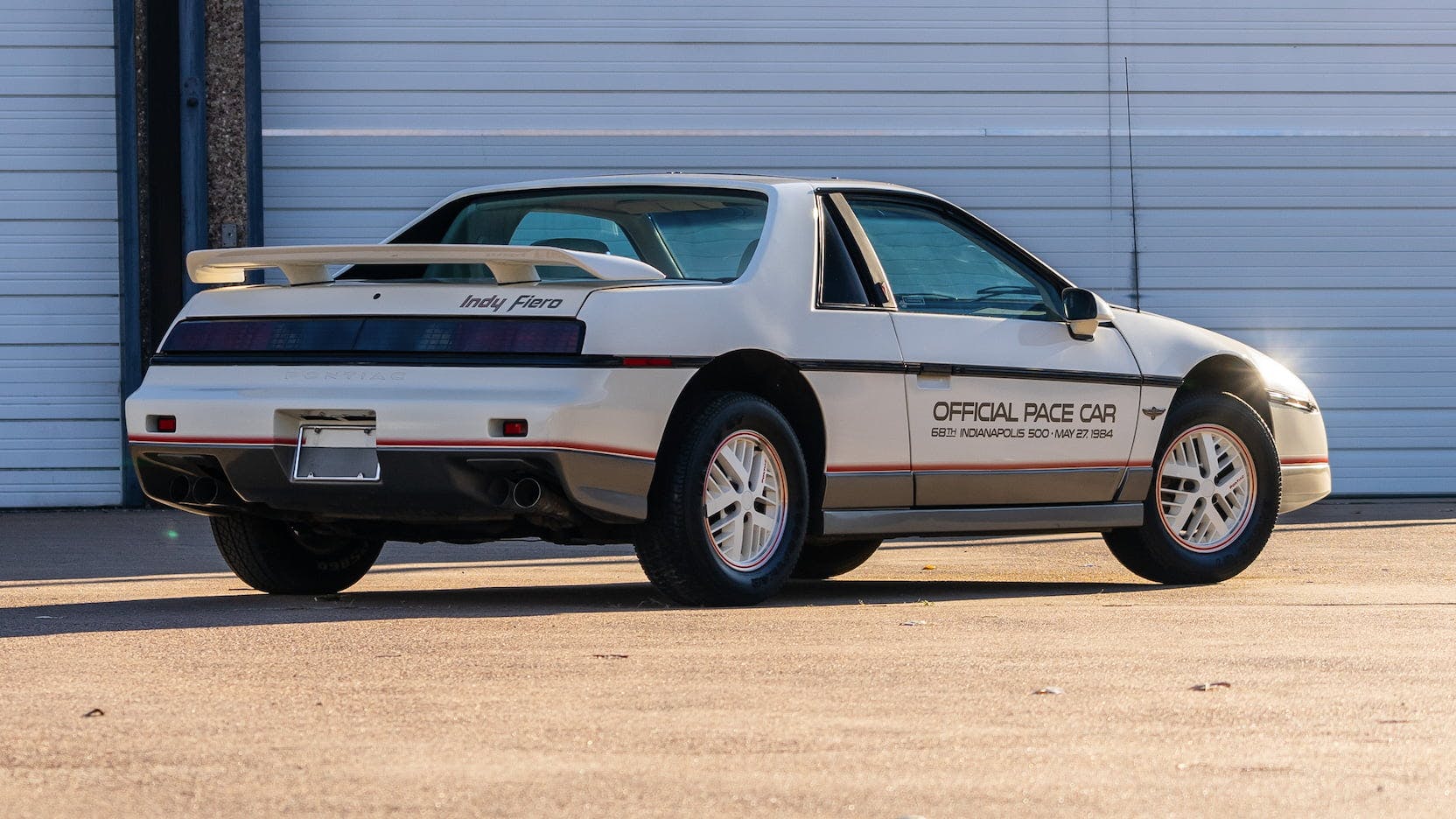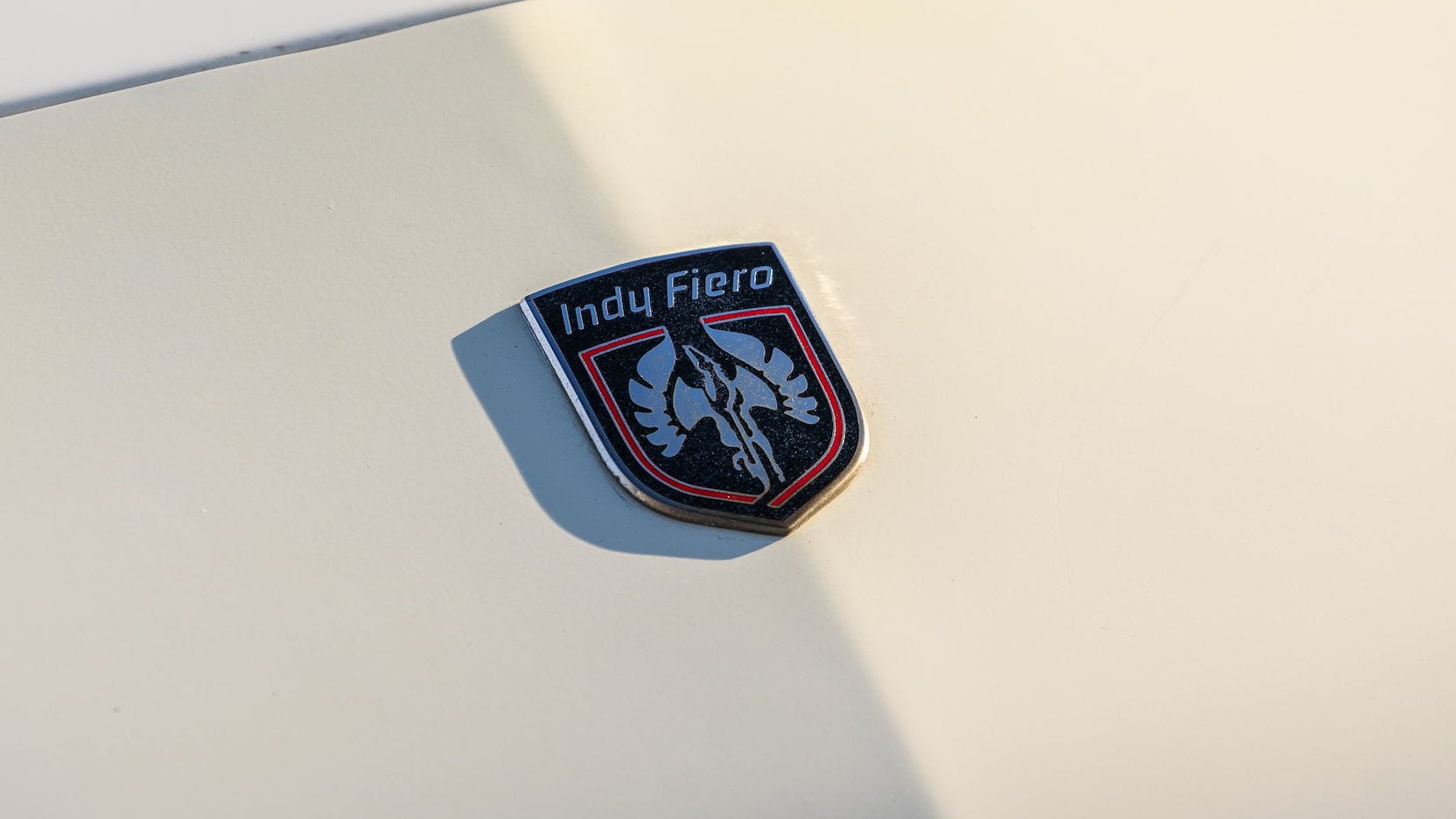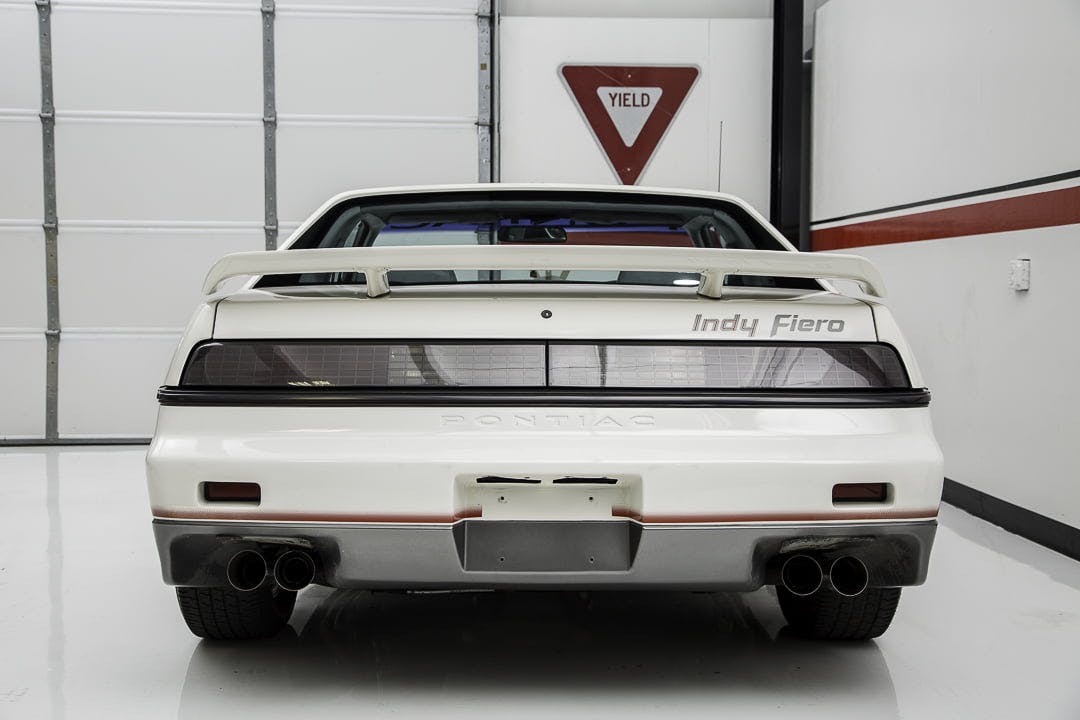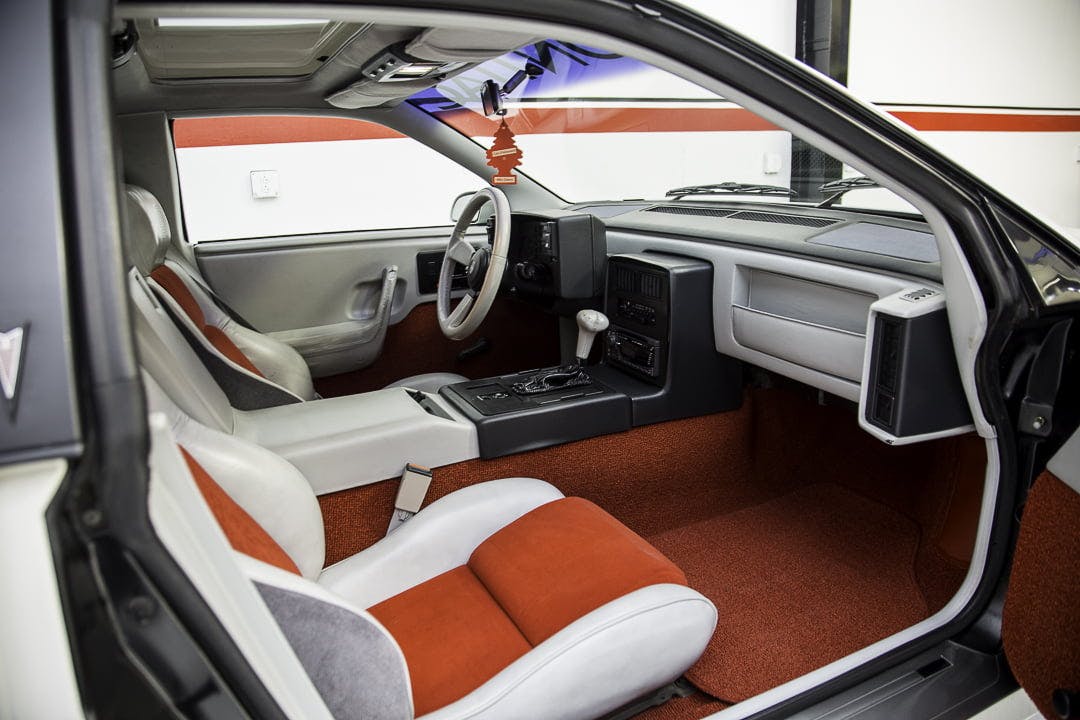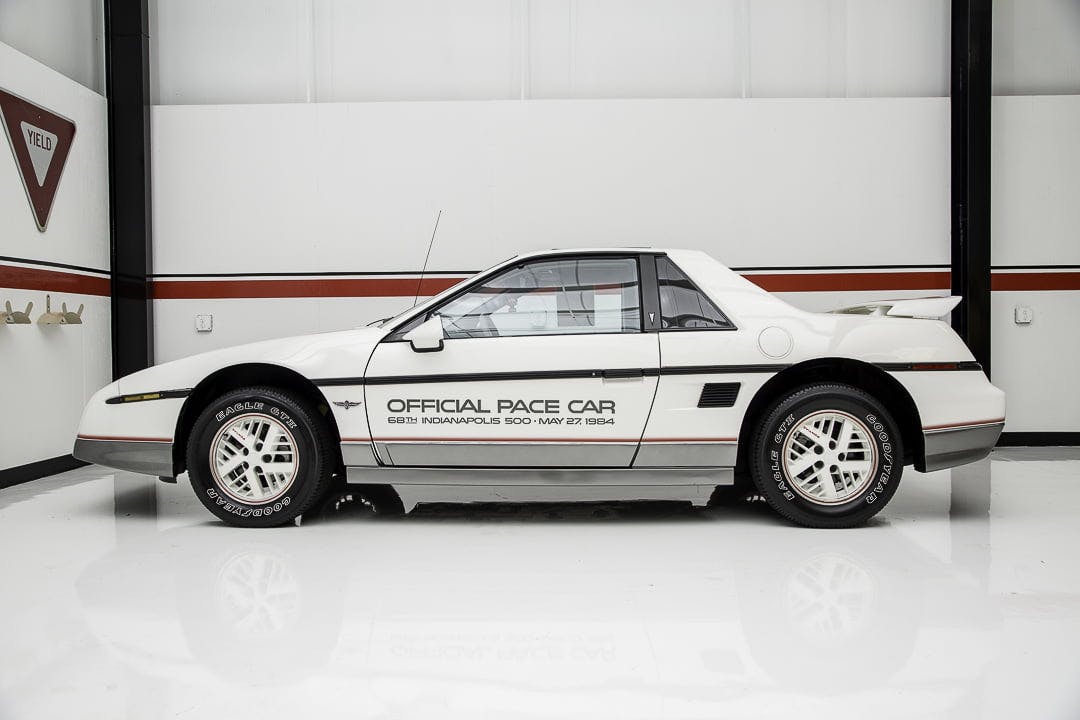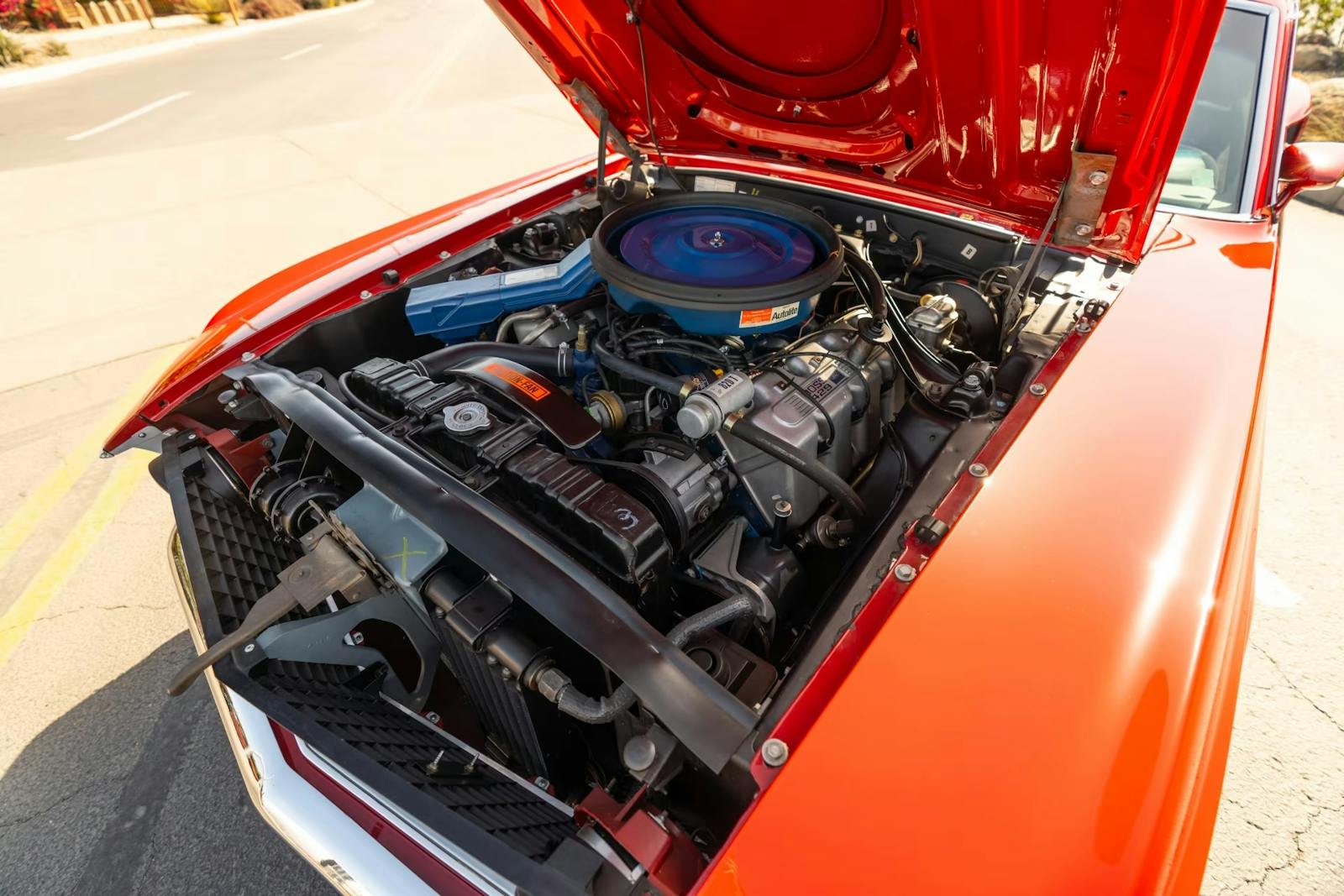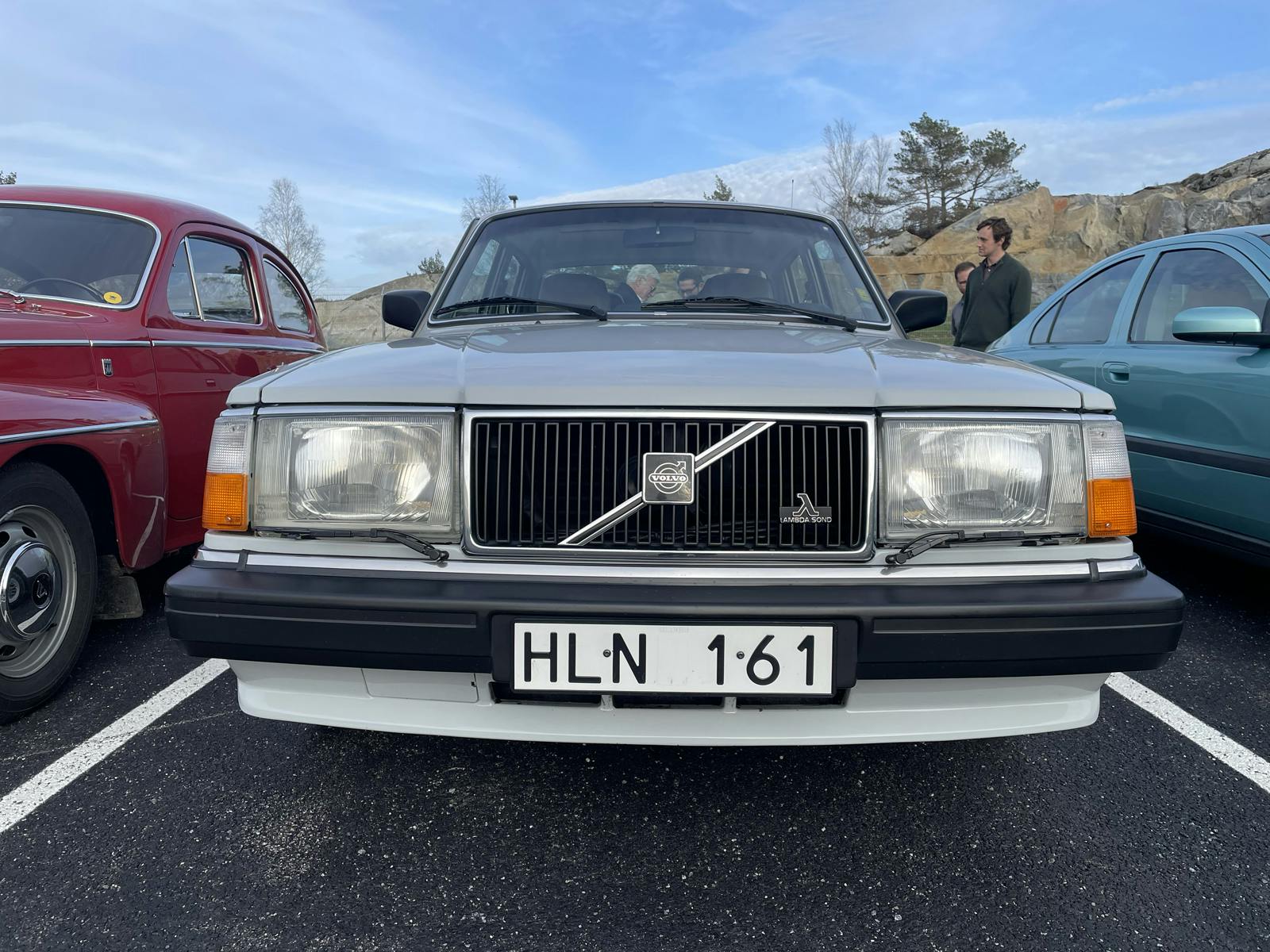Pontiac’s 1984 Indy pace car Fiero was the mid-engine firecracker we never got
When recent floods wiped out Sanford, Michigan’s Fieros Forever, the shop and nearby museum lost a 1984 Pace Car edition, among many other Fieros in its inventory. In the wake of the loss to the Fiero community, and particularly to owner Tim Evans, we were reminded of the lengths to which Pontiac went to make its unique, mid-engine car worthy of leading cars across the Brickyard.
Over its storied 84-year history, Pontiac was chosen to provide the pace car for the Indianapolis 500 on four occasions. Its first time at the head of the pack was in 1958 with a drop-top Bonneville. Pontiac wouldn’t return to the Indy oval until 1980, this time with a turbocharged Trans Am. Another turbo F-body would serve as the brand’s final Indy Pace Car in 1989. In between the boosted Trans Ams was another product, this one unique to the Pontiac brand: the all-new, mid-engine 1984 Fiero.
I’m not old enough to remember how the buying public reacted to the Fiero’s debut, but I can imagine it generated quite a lot of hype as the first mid-engine American car to hit the market. As the story goes, Pontiac was able to sneak the sprightly Fiero into production as an economical runabout, borrowing heavily from GM’s economy car parts bin to deliver an affordable car to the buying public. The drivetrain and rear suspension were cribbed from the Chevy Citation/Pontiac Phoenix while the front suspension was adapted from the Chevy Chevette/Pontiac Acadian.

Pontiac engineers bolted those inauspicious bits to a rigid, lightweight chassis and made a lively, fun car; however, they were hamstrung by the powertrain. Pontiac’s 2.5-liter Iron Duke four-cylinder was the only engine available for 1984. Known as much for its for dogged reliability as its despondent performance, the 92-hp four-cylinder was better suited to a mail truck than a sporty car. A 2.8-liter V-6 would be available for the 1985 model year, and while it didn’t add much more displacement, it brought with it 50 percent more valves and a V-6 exhaust note … if you’re into that sort of thing. Most importantly, it came with 140 hp. Not a lot, but much more than 92.
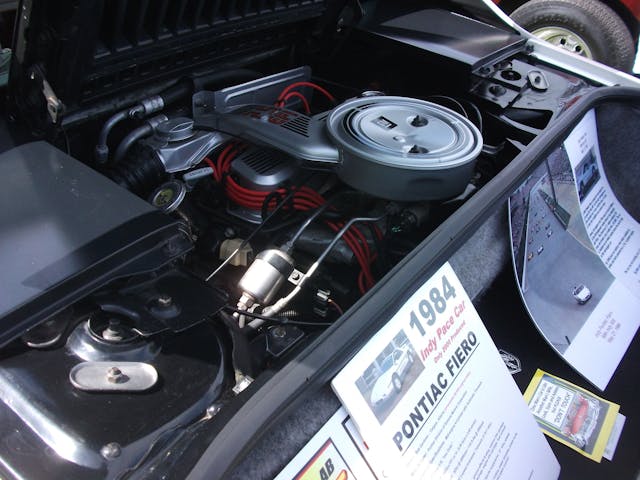
With no V-6 to rely on in 1984, the Fiero faced the daunting task of leading a field of 210-mph, open-wheel missiles with only 92 asthmatic horses. An engine swap was in order. As plenty of Fiero owners could tell you today, it’s possible to shoehorn a Buick V-6 or even a Cadillac or Chevy V-8 into the Fiero’s engine bay. However, Pontiac wanted to prove the mettle of a four-cylinder and went with the Super Duty 4, a pushrod race engine that would go on to power Fieros in IMSA GTU competition.
The Super Duty 4 is an evolution of the Iron Duke, and though both blocks have a 4.4-inch bore spacing, the Super Duty is considerably more robust. Its cylinder head uses a similar port configuration as does the Iron Duke, but the Super Duty’s larger, raised runners allow much more airflow. The engine saw use in displacements up to 3.3 liters in everything from Comp Eliminator drag racing to sprint cars.
Three Indy pace cars Fieros were built for race-day duty, each with a 2.7-liter Super Duty 4 engine producing 232 hp. That may sound meager by today’s standards, but it easily bested the 1984 Corvette’s 205-hp, 5.7-liter Crossfire Injection V-8. With John Callies behind the wheel on race day, the Super Duty Fiero reached 136 mph on the banked oval, a speed the Iron Duke could only dream of matching.

Only 2000 Indy Pace Car edition Fieros were built in 1984, a tiny fraction of the nearly 137,000 standard models sold that year. While they looked great with their body kits and decklid wings, each of those production models—which you’re seeing in these photos—was powered by the Iron Duke. They also lacked the way-cool, roof-mounted scoop of the real-deal pace cars. The Super Duty 4 was far too rowdy for a production car, but we can’t help but imagine what might have happened if Pontiac had the technology to deliver an emissions-legal, 232-hp, four-cylinder Fiero in 1984. If Pontiac had truly been unleashed, who knows what we might have seen?

